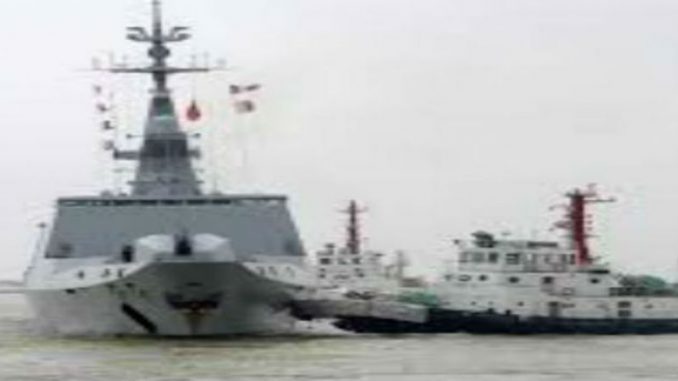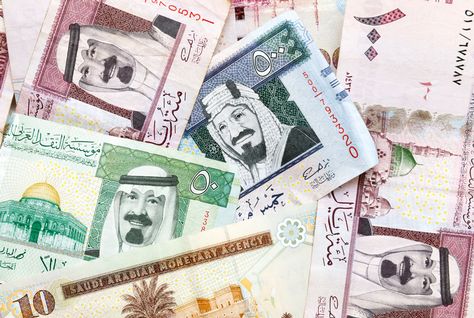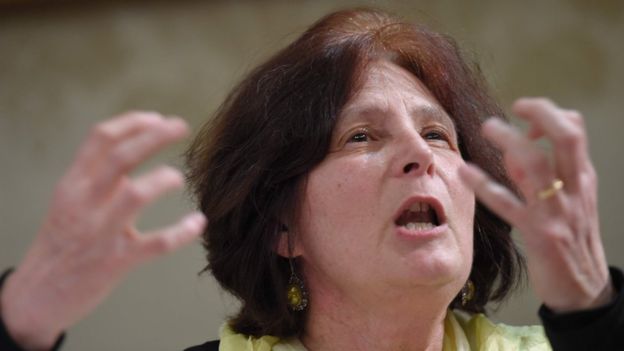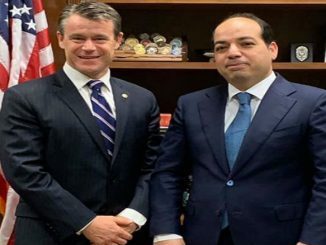
Since Abdel Fattah al-Sisi became president after he led a military coup against Egypt’s first democratically elected President Mohamed Morsi, the Egyptian military has embarked on a massive spending spree.
Egypt ranked the second among developing nations for importing arms in 2015 – buying almost $12 billion worth of arms, according to a new US congressional report.
Moreover, IHS Inc., the leading global source of critical information and insight, released a report stating that Egypt is the world’s fourth-largest defense importers last June. Egypt’s spending on military imports reached US$2.268 billion in 2015, according to the report.
In the same context, the Stockholm International Peace Research Institute (SIPRI), an international think-tank based in Sweden that tracks arms based on production price rather than the price at the time of purchase, stated that the value of arms transfers to Egypt reached $1.475bn in 2015 alone, compared to $686m in 2010 and $368m in 2014.Most of this was divided among fixed-wing aircraft and ships (mostly aircraft carriers).
Egypt’s Major Arms Deals In Al-Sisi Reign
Egypt is the largest US military aid receptor after Israel with US$1.3 billion in annual military aid.
However, Egypt has also made many crucial arms purchases from other countries, including Russia, France, and Germany since Abdel Fattah al-Sisi reached power by a military coup in 2013.
The Egyptian-French agreement in 2015 is the most high-profile deals.
Egypt and France signed an additional $ 1.1 billion deal for aircraft, ships, and a military satellite communication system in 2016.
In addition, Egypt concluded in January 2016 a deal for 46 assault helicopters from Russian firm Rosoboronexport to complement the Mistral carriers.
In the same context, Egypt and Germany signed the naval submarine deal in 2012. Under the initial terms of the agreement, Germany would export four state-of-the-art military submarines to Egypt.
Last December, the Egyptian Navy received from ThyssenKrupp Marine Systems (TKMS) the first two of four Type 209/1400 mod diesel-electric submarines (SSK). ThyssenKrupp Marine Systems of Germany is a group and holding company of providers of naval vessels, surface ships and submarines.
In fact, Egypt’s entire defense budget is classified as a state secret and no details on defense spending are available.
Even basic information unrelated to defense is classified on the grounds of national security.
The defense budget estimated to be around $4.4 billion according to the Transparency International.
In the same context, industry intelligence firm BMI Research estimated defense spending at US$5.1 billion in 2015, predicting it would exceed US$5.4 billion in 2016 and US$6.5 billion in 2020.
Does Egypt Need To Purchase Power and Offensive Weapons?
Carnegie Research Center published a report titled: “The Art of war in Egypt” highlighted that although the value of arms spending in Egypt has accelerated, “Yet the kind of weaponry purchased does not seem well suited for Egypt’s internal or external security challenges, nor do they fit its foreign policy aims.”
It reported that the Egypt purchased weapons which are used for launching war and carry out offensive operations. “The bulk of the purchases are of fighter jets, assault helicopters, and multi-purpose carriers, which are traditionally used to project power or carry out offensive operations. This raises questions about whether the state foresees a Syria-type internal conflict, according to the report.”
It is worth to mention that Egypt’s internal and external security threats do not offer a clear rationale for these types of purchases.
The Egyptian eastern borders are maintained as Egypt has reached a historic level of diplomatic and security cooperation with Israel.
The Egyptian-Israeli relations have flourished reaching an unprecedented level of cooperation on the security and diplomatic level.
On December 22, Egypt’s al-Sisi delayed a UN Security Council vote on the Israeli settlements when it became clear that the United States would not veto it.
In the same context, al-Sisi sent his foreign minister, Sameh Shoukry, to Jerusalem, to meet with Netanyahu in 2016. Egypt’s foreign minister visit to Israel, which was the first such in nine years, inferred the development in diplomatic relations between both countries.
Moreover, Egypt nominated Ahmed Aboul Gheit in May 2016 who is known across the region as “Israel’s Friend,” as head of the Arab League.
On the security level, Egypt and Israel have worked closely to combat insurgency in the peninsula over the past three years
At the most basic level, Israel has allowed modifications to the security annex of the Camp David Accords. In two dozen occasions, Israel allowed Egypt to deploy troops and equipment, including aircraft that were previously prohibited by the treaty.
On the other hand, the Israeli Air Force is taking part in the attacks against ISIS in Sinai and the IDF’s Military Intelligence Unit 8200 is assisting Egyptian forces to collect and decipher information about Sinai Province, according to foreign reports.
In addition, although the power vacuum in Libya has allowed a number of armed groups to proliferate, as the Islamic State(ISIS), which could potentially threaten Egyptian security.
However, Egypt was able to contain the repercussions of Libya’s instability. First, UAE jets used Egyptian air bases to conduct air raids in Libya and launching its own airstrikes in retaliation for the execution of a number of Coptic Egyptians, “according to Carnegie report.
It is worth to mention that Egypt and UAE support General Khalifa Haftar who allowed the Egyptian army to be responsible for protecting the eastern borders of Libya.
Second, unlike in Sinai, “no sophisticated insurgency has developed in the western part of the country: the conflict in Libya did not spill over the border, nor does it show any signs of doing so.”
The only threat on the Libyan border comes from smuggling weapons to Sinai, but Carnegie noted on its report that”However, rather than invest in border control equipment, such as sensors, drones, and increased ground patrols, Egypt purchased power projection equipment that is ill-suited for anti-smuggling efforts.”
In addition, Carnegie wondered that in countries where Egypt was expected to increase its military involvement, it has not done so. For example, Egypt has only supported Saudi Arabia in the war in Yemen symbolically as it sent air forces instead of ground troops.
As for al-Sisi’s fighting against the Islamic State (ISIS)insurgency in Sinai “the types of weapons purchased do not fit this task,” said Carnegie report. The Rafale jets purchased from France wont help , since the Egyptian military already possesses 230 F-16 fighter jets with similar capabilities—more than their current number of trained pilots.
In fact, the Apache helicopters the United States delivered in December 2014 are much more effective weapons against this type of insurgency, as they are better suited for hitting small targets.
In addition, Carnegie report also pointed that Mistral helicopter carriers won’t help in Sinai, “where there is no need to conduct amphibious landing operations. As such, it is difficult to make a connection between the fight in Sinai and the recent weapons imports. ”
Different Interpretations for the Increase in Arms Purchase under al-Sisi’s rule
According to some analysts, Egypt recent weapons imports aimed at “diversifying the suppliers to the Egyptian military, which is heavily dependent on the United States.”
Although the United States temporarily suspended weapons shipments after the 2013 coup, but it still gives Egypt $1.3 billion annually in military aid under the Camp David accords, making Egypt the second-largest recipient of U.S. military financing in the world.
“Even though the desire to diversify the sources of weapons supply might be a factor, this does not provide a full answer,” said the report.
In fact a real diversification of the supply seems to be outside the reach of the current Egyptian government as it would require massive funds to counterbalance the billions invested in U.S. weaponry over the past few decades.
According to the report,”Even though the Egyptian regime has invested heavily in the purchase of weaponry, the needed investment far exceeds current purchases that are already straining the fragile Egyptian economy.”
“For example, the Egyptian air force operates 584 fixed-wing aircraft, 230 of which are American F-16s, creating a strong structural dependence on American weaponry. Thus, in order to truly diversify the sources of supply, the Egyptian government has to purchase a much larger number of planes.”
As a result, diversifying the sources of supply might be a secondary factor especially due to the deteriorating economic situation as well as the U.S. aid has already fully resumed in March 2015 in the name of fighting terrorism.
Accordingly Carnegie pointed that is there was’t a foreign or a domestic security threats that explain the purchases, “it is possible the military might be gearing up for internal conflict.”
On January Revolution in 2011, Hosni Mubarak’s domestic repressive security forces of 1.5 million police officers and conscripts collapsed” within 24 hours and required the intervention of the military—which at the time had considerable popular support—to maintain order with limited casualties.”
In this context, the police and state security forces alone are not sufficient in case of a mass uprising.
Given this history, “the purchase of offensive weaponry could indeed be intended to project power domestically,” said Carnegie.
The Mistral carriers can be used to control vital cities like Port Said, Alexandria, and Suez—which was the first city to completely outbreak of the regime’s control in 2011—along the north coast and the canal.
Moreover, on September 26, 2016, al-Sisi pointed in a speech that he would use the military “as a tool for domestic repression.” He stated that the military has contingency plans to spread across the country within six hours in the event of domestic disturbances.
In the same path,” a potential internal conflict could explain the urge to invest in air power, which tends to be effective in putting down resistance in urban areas,” said the report.
It worth to mention that the Syrian air force, supported by the Russian air force, played a critical role in ensuring the survival that regime, eventually tilting the balance of the civil war in its favor.
As for the Egypt’s experience, the collapse of the domestic security forces in as in 2011 by attacks on police stations in densely populated areas would make “ground operations risky and costly” because of the topography of narrow, maze-like streets in these areas.
As a result, if the Egyptian regime expects a repeat of such attacks increased investment in the air force becomes a sensible step. During his November 2016 visit to Lisbon, al-Sisi himself mentioned the prospect of a civil war several times.
According to the report,”Considering the lack of credible traditional threats, the unsuitability of the weaponry for current counter-insurgency operations, and the risk-averse nature of Egyptian foreign policy, these weapons are most likely aimed at repressing a mass, urban uprising—with little regard for the civilian causalities fighter jets and attack helicopters are liable to incur.”
Egypt Finalized Arms Deals With Nearly the Same Amount of the IMF Loan
Egypt is passing through one of its harshest economic crises in its history.
Tourism and foreign investments, the two sources for foreign currency, have declined as a result of political instability and lack of security.
As a result, the Central Bank of Egypt (CBE) devalued the Egyptian currency last March.
The devaluation of the Egyptian pound and the shortage of foreign currency have flourished the black market on the currency expense and led to inflation. Inflation has reached its highest rate throughout 8 years -exceeding 19%.
In this context, Egypt tried to secure a loan from the International Monetary Fund(IMF). Accordingly, the Egyptian government has worked to fulfill the IMF economic reform program to secure the loan.
Last November, the International Monetary Fund’s executive board has approved Egypt’s request to secure $12 billion loan facility after Egypt met its requirements.
On August 30 Egypt started its first steps towards the loan when Egypt’s parliament approved a long-awaited law introducing a value-added tax (VAT) of 13 %, rising to 14% in the next fiscal year.
On November 3, the Central Bank of Egypt floated the Egyptian pound and gave up trying to peg the currency to the US dollar allowing it to devalue by almost half.
On November 4, Egypt took another unprecedented decision, which has always been abandoned by former leaders in fear of public unrest, to cut subsidies for fuel leading to jump in prices, in addition to the introduction of the value-added tax to raise revenues.
It is noteworthy that all Egypt’s presidents tend to avoid these economic measures of the IMF recalling poor Egyptians riot when President Anwar Sadat removed them on flour, rice, and oil in 1977, part of an effort to secure IMF-backed financing.
He reinstated later from the decision. Though Egypt has returned to the IMF virtually every decade since the 1970s, implementation of reforms has been mixed.
However, it seems that al-Sisi has decided to put the burden of the IMF loan on his own people, as he kept on calling them to endure hardship and austerity.
It is worth to mention that the amount of money spent on arms deals as mentioned in the new US congressional reports is nearly the same amount of the IMF loan with $12 billion.
However, Abdel Fattah al-Sisi chose to seek the IMF loan with all its negative repercussions on the Egyptian people instead of saving the money he spent on the arms deals.
According to Carnegie,”The regime’s priority on such military spending given the economic crisis is perhaps an indication of how much they fear and prepare for large-scale internal conflict.”



